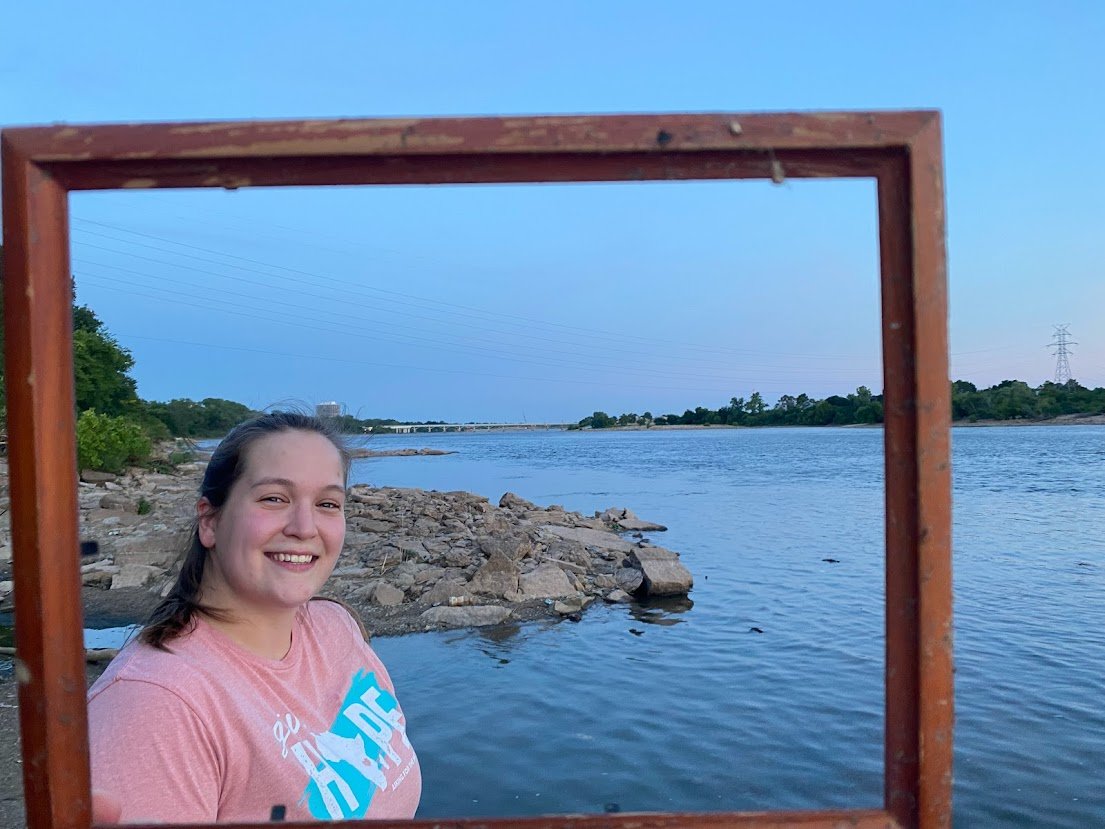Cyrus Avery Centennial Plaza - Tulsa, Oklahoma
Eight flags representing the eight states of Route 66 fly over Robert Summers’ $1 million “East Meets West” statue, unveiled in 2008.
Great empires are defined by their highways and their bridges. Infrastructure set the Romans apart and helped build the behemoth that is the United States economy.
But times change, and these days the American highways have also become corridors for homelessness and destitution. The same roads that transport goods from Florida to Kansas transport vagrants from California to Tulsa.
For every roadside motel there’s a trash-filled camp under a bridge, and for every Route 66 attraction there’s a profane piece of vandalism. Sometimes the two go hand-in-hand.
Cyrus Avery Memorial Bridge
Five bridges cross the Arkansas River in downtown Tulsa, all side-by-side. One is for trains, two carry I-244 traffic, one is the current Route 66 / Southwest Boulevard route, and one is now known as the Cyrus Avery Memorial Bridge.
Constructed in 1915, upgraded in 1929, and expanded in 1934, the now-disused 11th Street Bridge was once the heart of Route 66.
Now it’s a relic, slowly crumbling into the river and unfit for even pedestrian use. The bridge was closed to vehicles in 1980 and to pedestrians in 2008. It was added to the National Register of Historic Places in 1996 and renamed for the former Tulsa County Commissioner and “Father of Route 66” in 2004.
The bridge is technically the centerpiece to Tulsa’s Route 66 Plaza, but since it was closed to pedestrians, one can only view it from the new I-244 bridge that runs parallel to it. The bridge was deemed to expensive to repair and too valuable to demolish. Now’s it’s just a vandalized monument to failing American infrastructure, overgrown with weeds and presenting an eyesore to the daily traffic that likely has no clue of its historic art deco architecture.
Tulsa’s Route 66 Plaza
It’s no surprise that a monument to an abandoned, crumbling bridge is also abandoned and crumbling. Not the whole plaza, of course. The Route 66 sign over 11th Street is of course, beautiful. As is Robert Summers’s $1 million “East Meets West” statue, unveiled in 2008.
The bronze sculpture depicts the Avery family riding into Tulsa on a Model T and spooking a horse-drawn carriage along the way. The unique car statue is cast from an actual 1920s Ford antique. Surrounding the statue are the flags representing the eight states that Route 66 traverses.
Because these two tourist attractions actually sit close to the road and are easily accessible and well-lit, they have survived the homeless and the vandals relatively unscathed.
The rest of the plaza, not so much.
A Walk Down Memory Lane
Charity and I visited Cyrus Avery Plaza on a hot summer evening, on a whim. We wanted to go for a walk along the river and after parking near the Spotlight Theater I decided we should go north towards the bridge and statue I had always seen from the highway, but never visited.
I’ve spent my entire life in Tulsa, but I had no idea that the bridge was any sort of historic landmark. Nor did I know what lay underneath the 244 bridges.
Beneath the northbound lanes there is half a pedestrian bridge that goes out over the water to a small plaza with some benches, informational signage, a ton of vandalism, and the remnants of burned trash.
I’ll admit, it would have been a sweet little plaza if people didn’t suck.
Beneath the southbound bridge there’s a pedestrian bridge that goes all the way across the river, and the names of significant Route 66 cities are painted along the path. It’s also a hangout for the homeless.
The support columns beneath the bridge have been painted with graffiti-style murals that don’t really match the Route 66 theme, but I’m betting they are, in fact, graffiti.
Charity and I wrapped up our evening with a stroll along the riverbanks on our way back to the car. I found a wooden picture frame along the trash-littered shore.
I guess there’s beauty to be found even in the waste and wreckage of humanity. The river is still beautiful despite the trash, and the Cyrus Avery plaza is still an important piece of history despite its neglect.











